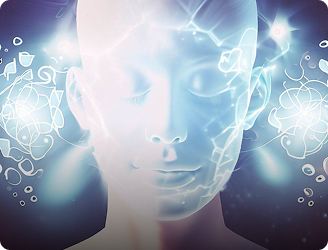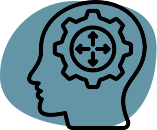
Rewiring Your Brain for Wellness: The Role of Neuroplasticity in Healing from Emotional Wounds
In the hustle and bustle of modern-day life, emotional well-being often takes a back seat, overshadowed by work pressures, family responsibilities, and social obligations. Yet, as we navigate the complexities of adulthood, many of us carry emotional wounds—some deeply ingrained from childhood, others from relationships, or from moments of personal failure or trauma. But what if healing these wounds wasn’t just about time or external factors? What if it involved something far more powerful—your brain itself?
In this post, we explore the fascinating concept of neuroplasticity and how it can help rewire your brain for emotional wellness. Much like the ancient Indian tradition of “purification of the mind,” which emphasizes mental clarity, peace, and emotional healing, neuroplasticity offers a modern, science-backed path to transforming our emotional scars into sources of strength.
What Is Neuroplasticity?
Neuroplasticity refers to the brain’s ability to reorganize itself by forming new neural connections throughout life. It’s the brain’s remarkable capacity to adapt, heal, and change, especially in response to new experiences, challenges, and even adversity. Think of it as the brain’s own “self-repair” system, capable of remodeling pathways, structures, and functions based on the way we think, feel, and behave.

For years, we believed that the brain was mostly static after childhood, but now, we know that it can continue to evolve throughout adulthood. This is great news for anyone on a journey of emotional healing because it means that even deeply ingrained emotional wounds can be healed by “rewiring” the brain.
Emotional Wounds and Their Impact
Emotional wounds, often left unhealed, manifest in various ways: anxiety, depression, anger, relationship difficulties, and even physical ailments due to chronic stress. These wounds might stem from childhood experiences, toxic work environments, or painful relationships that leave us feeling emotionally scarred.
But what does this mean for our brain? Emotional experiences—especially those involving pain, loss, or trauma—create lasting memories that shape our responses and perceptions. The neural pathways linked to these memories get strengthened each time we revisit them, whether consciously or unconsciously. As a result, we may find ourselves stuck in negative thought patterns, emotional triggers, and maladaptive behaviors that keep us from moving forward.
The Indian Concept of "Purification of the Mind" and Its Connection to Neuroplasticity
In Indian philosophy, particularly in Yoga and Ayurveda, the purification of the mind is a central concept. This purification process involves clearing the mind of negative thoughts, harmful attachments, and emotional burdens to restore balance and peace. Techniques such as meditation, mindfulness, breathing exercises, and self-reflection are used to cleanse the mind and promote emotional wellness.
Interestingly, this concept aligns perfectly with the principles of neuroplasticity. Just as “purification” aims to remove the emotional clutter and toxins from our minds, neuroplasticity involves the brain’s ability to “clear” old neural pathways that no longer serve us and replace them with healthier, more adaptive patterns. Both processes seek to help individuals experience greater mental clarity, emotional balance, and overall well-being.
How Neuroplasticity Helps Heal Emotional Wounds
Alright, let’s get to the good part—practical, actionable steps you can start using right now. These are simple exercises backed by science to help you activate your brain’s ability to heal:
Changing Negative Thought Patterns:
We all have automatic negative thoughts that arise in response to stress, failure, or conflict. These thoughts may have developed over years of conditioning and can feel like an unchangeable part of who we are. However, neuroplasticity allows us to actively reshape our thoughts and create new pathways in the brain that are more positive and constructive.
For example, individuals with a history of anxiety or depression may find themselves stuck in a cycle of rumination and self-doubt. With the right interventions—such as cognitive behavioral therapy (CBT), mindfulness practices, or gratitude exercises—the brain can “rewire” itself to break free from these habitual patterns and cultivate healthier ways of thinking and responding.
Building Emotional Resilience:
Emotional resilience—the ability to bounce back from setbacks—is a crucial skill for navigating life’s challenges. Neuroplasticity plays a key role in building resilience by encouraging the brain to adapt to stress in healthier ways. Practices like meditation and mindfulness help “train” the brain to stay calm and focused in the face of adversity, strengthening the neural circuits associated with emotional regulation.
For example, research has shown that consistent mindfulness practice can enhance the brain’s ability to manage stress, reduce impulsivity, and improve emotional regulation. Over time, the brain rewires itself to be less reactive to stressors, leading to greater emotional balance and resilience.

Real Transformations, Real Results

Practical Ways to Rewire Your Brain for Emotional Wellness
Now that we understand the connection between neuroplasticity and emotional healing, let’s look at some practical steps to actively “rewire” the brain for wellness.

Mindfulness Meditation:
Meditation, particularly mindfulness meditation, is one of the most effective ways to reshape your brain. It helps increase self-awareness, reduce stress, and cultivate positive emotions. Studies have shown that regular meditation can enhance gray matter density in the brain, which is associated with emotional regulation and resilience.

Cognitive Behavioral Therapy (CBT):
CBT is a powerful therapeutic approach that helps identify and challenge negative thought patterns. It teaches individuals to reframe their thinking, which, in turn, rewires the brain to develop healthier emotional responses.

Gratitude Practice:
Start or end your day by listing three things you’re grateful for. This simple practice has been shown to activate the brain’s reward centers and increase feelings of happiness and contentment over time.

Physical Exercise:
Exercise is not just good for the body—it’s also a powerful tool for emotional healing. Physical activity increases the production of endorphins (the brain’s “feel-good” chemicals), improves mood, and supports the growth of new brain cells.

Journaling and Self-Reflection:
Writing down your thoughts and feelings can be an incredibly effective way to process emotions and gain clarity. By reflecting on your experiences, you can identify negative patterns and consciously work towards reshaping them.

Breathwork and Relaxation Techniques:
Deep breathing exercises, such as those practiced in yoga and pranayama, can help calm the nervous system and reduce the impact of stress. Regular practice helps strengthen neural pathways associated with calmness and emotional control.
Need Physiotherapy Help? Reach Out to Us
Conclusion: Rewiring Your Brain for a Healthier, Happier Life
Healing emotional wounds is not just a matter of time or external circumstances. By tapping into the brain’s natural ability to rewire itself through neuroplasticity, we can actively transform the way we think, feel, and respond to life’s challenges. This process is remarkably similar to the Indian tradition of “purification of the mind,” where we cleanse the mind of negative influences to restore peace and balance.
With the right tools and practices, such as mindfulness, gratitude, and cognitive restructuring, you can begin to heal emotional scars and create a more positive, resilient version of yourself. The power to heal is within you, and it lies in the very structure of your brain—waiting for you to take action.
So, start today. Embrace the science of neuroplasticity, and take the first step toward rewiring your brain for wellness and emotional healing. The path to emotional freedom and well-being is closer than you think.
Help Me Help You!
If you’re ready to start healing those emotional wounds and rewiring your brain, I want to help you. That’s why I’m excited to announce that the Self-Healing Starter Kit will be launching soon on my website. This kit is designed to guide you through each of these steps, offering practical tools and insights to help you create lasting emotional wellness.
Stay tuned for the launch of the kit, and in the meantime, visit my website for more content that can support you on your journey to emotional healing. You deserve to feel better, to heal, and to live with greater peace—and it all starts with your brain.
